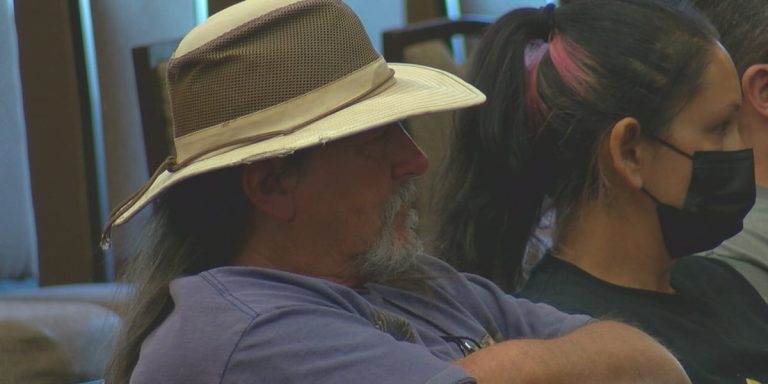Lawton City Council Addresses Wildlife Rehabber Property Abatement Amidst Community Outcry
LAWTON, Okla. – The Lawton City Council convened on Tuesday to address the recent abatement of Wallie Breaden’s property, a wildlife rehabber whose animals were confiscated due to concerns over his living conditions and lack of permits. The meeting included a presentation by Neighborhood Services and Lawton Animal Welfare, aiming to clarify the city’s actions amidst public criticism and accusations of misinformation.
The presentation featured photographs taken by city officials depicting the property’s condition and deceased animals. Officials also outlined a timeline of notices, complaints, and subsequent actions taken, emphasizing the legality of the abatement process. Councilman George Gill acknowledged the perceived good intentions of Breaden’s wildlife rehabilitation efforts but stressed the importance of adhering to city ordinances. He expressed concerns about the animals’ well-being, suggesting their living conditions might have been detrimental to their health.
Council members echoed these sentiments, emphasizing the incompatibility of Breaden’s property with the city’s "Kids First Initiative," which prioritizes safe and healthy environments for children. Mayor Pro Tem Randy Warren acknowledged Breaden’s dedication to animal welfare but reiterated the need for such activities to be conducted in appropriate settings, away from residential neighborhoods.
Following the presentation, several community members voiced their support for Breaden, challenging the city’s narrative and highlighting his commitment to animal care. They pointed to the irony of Animal Control previously bringing animals to Breaden, now criticizing him for having them. Residents attested to Breaden’s responsiveness and willingness to help, portraying him as a dedicated individual who consistently went above and beyond for animals in need.
While acknowledging the issue of proper permitting, community members urged the council to consider Breaden’s compassionate nature and the extenuating circumstances surrounding the situation. They emphasized that the photographs, while disturbing, did not represent the full picture of Breaden’s dedication to animal welfare. One resident poignantly remarked on the emotional toll the situation had taken on Breaden, stating, "This has broken him."
The case of Wallie Breaden highlights the complex intersection of animal welfare, individual compassion, and municipal regulations. While the city maintains its actions were justified and necessary, the community’s outpouring of support for Breaden raises questions about the balance between enforcing ordinances and recognizing the value of individual contributions to animal care. The incident has sparked a wider conversation about the city’s approach to wildlife rehabilitation and the need for clearer guidelines and resources for individuals engaged in such activities.
The city’s presentation sought to address what officials termed "misinformation" circulating within the community. The detailed timeline of events presented by city officials aimed to demonstrate that proper procedures were followed and that the decision to abate the property was not taken lightly. However, public comments revealed a lingering sense of distrust and a belief that the city’s actions were disproportionate to the situation.
Community members argued that Breaden’s dedication to animal welfare should be considered a mitigating factor, suggesting the city could have explored alternative solutions rather than resorting to confiscation. They highlighted the lack of readily available resources for wildlife rehabilitation in the area, leaving individuals like Breaden to fill the void, often with limited resources and support.
The incident has underscored the need for greater communication and collaboration between the city and residents involved in animal rescue and rehabilitation. Several community members expressed a desire for clearer guidelines regarding permitting and property standards for wildlife care, suggesting a more proactive approach could prevent similar situations from arising in the future.
Furthermore, the emotional testimony of residents who witnessed Breaden’s compassion and dedication to animal welfare has humanized the issue, challenging the purely legalistic perspective presented by the city. The community’s response suggests a need for greater empathy and understanding in addressing such sensitive situations. The case raises the question of how cities can balance the enforcement of regulations with supporting individuals who are genuinely committed to animal welfare, even if they may lack the resources or knowledge to comply fully with all applicable regulations.
The debate surrounding Wallie Breaden’s property abatement reveals a deeper tension between the letter of the law and the spirit of compassion. While the city maintains its adherence to established procedures, the community’s response indicates a desire for a more nuanced approach that considers the individual circumstances and motivations of those involved in animal welfare. Moving forward, the city of Lawton faces the challenge of balancing the enforcement of regulations with fostering a supportive environment for individuals dedicated to animal care, ultimately striving for solutions that benefit both the community and the animals in need.


